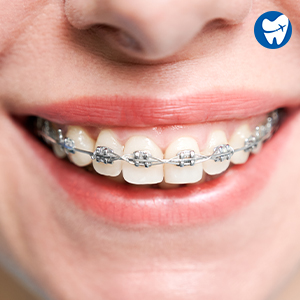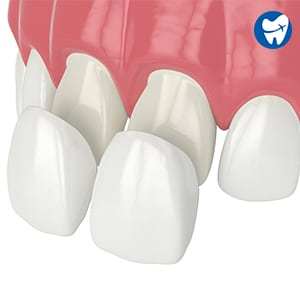Are you conscious of the gap between your teeth? The teeth gap, also known as diastema, is a common problem. [1] Continue reading for more details.
Gap in Teeth Is a Common Issue
Diastema is the space (gap) between two teeth. It is most visible between the front two teeth.
Gap in teeth is brought on by alignment issues, projecting teeth, and oversized tissue. Other than that, it is typically a result of imbalance between the jaw and the size of the teeth. [2]
Treatment For Gap in Teeth
Some common treatments available for gap in teeth are
- Braces
- Dental Veneers
- Dental Bonding
Braces for Closing Teeth Gaps
Braces and clear aligners are the popular orthodontic treatments to fix a gap in teeth. [3]
It is not an instant fix but can also help fix other dental issues–for example, tooth misalignment.
Consult a dentist to decide whether you need metal braces or clear aligners.
The treatment approach will vary according to the severity of the problem. [4]
Braces Can Fix Gap in Teeth
Braces move teeth into position with the help of brackets, wire, and an elastic chain. [5]
Teeth can be moved together, and gaps can be filled using a chain of small elastic bands.
The coloured elastic chain is designed to fit over tooth-bracket attachments. [6] Gaps can be filled with braces in as much as ten months. [7]
Veneers for Closing Teeth Gaps
Dental veneers, often referred to as laminates, can be used to close gaps between teeth.
They also address issues with color, alignment, and minor structural flaws or damage.
Veneers made of porcelain or composite resin are affixed to the visible teeth' front surfaces to enhance their aesthetics.
Depending on your treatment objectives, they may be placed on one or more teeth. [8]
Veneers Can Fix Gap in Teeth
Dental Bonding for Closing Teeth Gaps
To close gaps between teeth, your dentist may use composite bonding, also known as dental bonding.
With this technique, the gap between two teeth is virtually filled in using composite resin.
Composite resin can be made specifically to match the shade of your teeth, so it will appear very natural after it is put in.
Moreover, composite bonding typically has to be renewed 5-10 years after the initial application. [9]
FAQs
Teeth gaps frequently collect food particles, which encourage the growth of bacteria and plaque in your mouth.
Untreated gaps damage your teeth and gums. They lead to issues like periodontitis, tooth decay, and gingivitis.
Spaces between the teeth may also cause a misaligned bite. [10]
Braces are the longer route to fixing a gap in teeth.
The other treatment options available are dental bonding, dental veneers, and dental crowns.
However, your treatment may vary as per the severity of your situation.
Conclusion
All the treatments stated above are ideal treatments for a gap in teeth. However, your dentist will decide what treatment suits your needs best.
Dentavacation can help you get in touch with the top yet affordable dental clinics abroad.




